The Australian Kelpie
The Australian Kelpie has a compact body and well-developed limbs. Slightly longer than they are tall, they have a broad chest and firm hindquarters that contribute to their flexible, energized appearance. The head is long and narrow. The medium length tail is low set. The short, compact feet have well arched toes. They in three coat types, smooth, short, and rough, with almost every color from black through light tan or cream. They used to have a double coat, but this has largely disappeared.
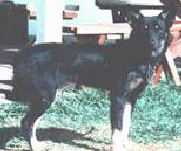

They weigh 25 to 45 pounds with a life expectancy of 10 to 14 years. Beware of PRA= Progressive Retinal Atrophy – retinal degeneration causing partial to total blindness. They are easy to groom an occasional combing and brushing is all that they need. Bathe only when necessary as it will remove the natural oils in the weather-resistant coat and dry out the skin.
There are two separate registries for Kelpies. The Working Kelpie Council for herding ability and allows a wider variety of coat colors. The Australian National Kennel Council encourages breeding for appearance and limits colors, promoting solid colors over others. They are also registered with the American Rare Breed Association.
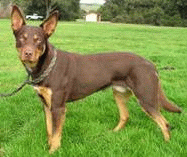
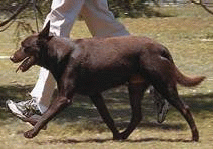
Excellent at herding, the Australian Kelpie is far too work-oriented and energetic for apartment existence. They are devoted one-person dog that will guard their family and belongings when necessary, regardless of the risk to themselves. They are ready to respond immediately to any signal given by its master, even from a great distance. They will try to herd other animals and children whether they want to be herded or not.
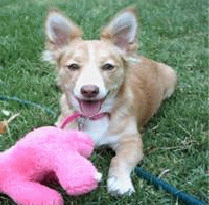
They are good with children when they are raised with them from puppy hood. One of the basic prerequisites for your children and your puppy to have a good relationship is to teach the child, as well as the puppy, what is allowed. Babies and toddlers should not be left unattended with your dog, no matter what breed. A child should learn not to handle the dog roughly or tease him. The parent, not the child, should be responsible for correcting the puppy if he gets too rough. Puppies and dogs have a tendency to look at children as “siblings” in the social order of the family, and the dog should never be allowed to get the upper position over the child. Something that sometimes occurs with puppies of herding breeds and kids is that, in play, the puppy may chase and nip at the heels of the child. This is because the dog is bred to herd and he is trying to “herd” the child because it is natural to herd something moving. In this situation, it is a good idea to have the child stop running and tell the dog “no bite.” This should not be confused with actually trying to harm the child, but the game should not be encouraged.
This workaholic will work until it drops. They are independent and in business for themselves rather than for pleasing a handler. Boredom is the breed’s doom. In their native country of Australia, they work all day even in intense heat, covering 1,000 to 4,000-plus acres. The breed uses “eye” similar to the Border collie’s on the tractable stock, but utilizes its nipping ability to turn more stubborn cattle. Working Kelpies are renowned for running along the backs of sheep when moving them through chutes. They can also be trained as seeing-eye dogs.
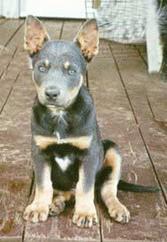
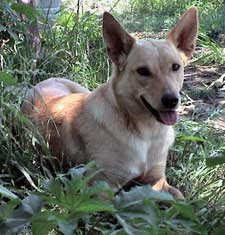
For more information about these dogs you can go to these sites:
The working Kelpie Council of Australia
There are no “stand alone” Kelpie rescues, but you can contact:
Deb Ray at American Cattle Dog Rescue Inc: [email protected]
Check out our webmistress’s list of people who rescue Kelpies:

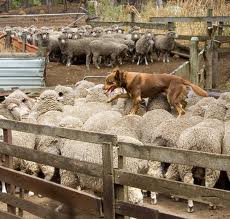
https://semaglupharm.com/# Rybelsus 3mg 7mg 14mg
CrestorPharm: Generic Crestor for high cholesterol – CrestorPharm
https://prednipharm.shop/# prednisone 15 mg daily
Predni Pharm: order prednisone with mastercard debit – Predni Pharm
Crestor Pharm [url=http://crestorpharm.com/#]CrestorPharm[/url] Crestor home delivery USA
https://semaglupharm.shop/# how long does it take for rybelsus to get out of your system
PredniPharm: PredniPharm – prednisone 2.5 mg price
CrestorPharm: Crestor Pharm – Best price for Crestor online USA
No RX Lipitor online [url=http://lipipharm.com/#]Lipi Pharm[/url] does lipitor cause muscle pain
https://semaglupharm.com/# Rybelsus for blood sugar control
prednisone price south africa: Predni Pharm – cheap prednisone online
https://semaglupharm.com/# Semaglu Pharm
https://semaglupharm.com/# semaglutide diet plan
CrestorPharm: CrestorPharm – Crestor Pharm
tyler the crestor dad [url=https://crestorpharm.com/#]crestor doses available[/url] п»їBuy Crestor without prescription
Lipi Pharm: No RX Lipitor online – does atorvastatin cause dementia
https://semaglupharm.shop/# Semaglu Pharm
PredniPharm: PredniPharm – PredniPharm
order prednisone [url=https://prednipharm.com/#]prednisone 1 mg daily[/url] PredniPharm
rosuvastatin anxiety: CrestorPharm – Crestor Pharm
https://semaglupharm.shop/# SemagluPharm
http://lipipharm.com/# atorvastatin nursing considerations
is lipitor a controlled substance [url=http://lipipharm.com/#]Lipi Pharm[/url] Atorvastatin online pharmacy
SemagluPharm: Where to buy Semaglutide legally – Semaglu Pharm
https://semaglupharm.shop/# SemagluPharm
CrestorPharm: Crestor Pharm – Crestor Pharm
Semaglu Pharm [url=http://semaglupharm.com/#]semaglutide for prediabetes[/url] Semaglu Pharm
Crestor Pharm: CrestorPharm – is crestor an ace inhibitor
https://semaglupharm.shop/# SemagluPharm
3 mg rybelsus: Semaglu Pharm – SemagluPharm
Lipi Pharm [url=https://lipipharm.shop/#]LipiPharm[/url] Lipi Pharm
Rosuvastatin tablets without doctor approval: CrestorPharm – Crestor home delivery USA
https://prednipharm.com/# prednisone pills for sale
https://semaglupharm.com/# SemagluPharm
rybelsus pronunciation: Semaglu Pharm – Semaglu Pharm
cortisol prednisone [url=https://prednipharm.com/#]Predni Pharm[/url] PredniPharm
20mg prednisone: Predni Pharm – Predni Pharm
http://semaglupharm.com/# rybelsus weight loss in non diabetic patients
No RX Lipitor online: Lipi Pharm – Lipi Pharm
Safe delivery in the US [url=https://semaglupharm.com/#]how to open rybelsus bottle cap[/url] Semaglu Pharm
LipiPharm: Lipi Pharm – what to avoid when taking atorvastatin?
https://semaglupharm.com/# Semaglutide tablets without prescription
https://semaglupharm.shop/# Semaglutide tablets without prescription
prednisone brand name in india: prednisone medication – medicine prednisone 10mg
No doctor visit required statins [url=https://crestorpharm.shop/#]Safe online pharmacy for Crestor[/url] picture of rosuvastatin 10 mg
https://semaglupharm.com/# No prescription diabetes meds online
Online statin therapy without RX: rosuvastatin vs crestor – pill identification rosuvastatin 10 mg pill identifier
rosuvastatin 5 mg pink pill: CrestorPharm – Crestor Pharm
Predni Pharm [url=http://prednipharm.com/#]prednisone 20mg by mail order[/url] 50 mg prednisone canada pharmacy
http://semaglupharm.com/# Semaglu Pharm
Lipi Pharm: Lipi Pharm – Online statin drugs no doctor visit
https://semaglupharm.com/# SemagluPharm
Crestor Pharm: CrestorPharm – apo-rosuvastatin
https://semaglupharm.com/# SemagluPharm
LipiPharm [url=https://lipipharm.shop/#]Lipi Pharm[/url] Lipi Pharm
Online pharmacy Rybelsus: FDA-approved Rybelsus alternative – semaglutide names
canadian pharmacy ltd: canadian world pharmacy – canadianpharmacymeds
http://canadapharmglobal.com/# canada pharmacy online
canadian pharmacy world [url=https://canadapharmglobal.shop/#]Canada Pharm Global[/url] canadian pharmacy ratings
India Pharm Global: India Pharm Global – India Pharm Global
https://canadapharmglobal.com/# canada rx pharmacy
buy prescription drugs from canada cheap: canadian pharmacy – canadian pharmacy india
https://canadapharmglobal.shop/# canadian pharmacy sarasota
canadian pharmacies online [url=https://canadapharmglobal.com/#]canadian pharmacy meds review[/url] best canadian online pharmacy
Meds From Mexico: mexican border pharmacies shipping to usa – reputable mexican pharmacies online
mexican online pharmacies prescription drugs: Meds From Mexico – Meds From Mexico
http://medsfrommexico.com/# Meds From Mexico
mail order pharmacy india [url=https://indiapharmglobal.shop/#]India Pharm Global[/url] India Pharm Global
https://medsfrommexico.shop/# Meds From Mexico
online shopping pharmacy india: India Pharm Global – best online pharmacy india
world pharmacy india: Online medicine home delivery – cheapest online pharmacy india
http://medsfrommexico.com/# medication from mexico pharmacy
Meds From Mexico [url=https://medsfrommexico.com/#]Meds From Mexico[/url] Meds From Mexico
Meds From Mexico: pharmacies in mexico that ship to usa – Meds From Mexico
canadian pharmacies compare: pet meds without vet prescription canada – buying drugs from canada
https://canadapharmglobal.com/# best online canadian pharmacy
http://medsfrommexico.com/# Meds From Mexico
canadian pharmacy king [url=https://canadapharmglobal.com/#]buying drugs from canada[/url] canadian neighbor pharmacy
India Pharm Global: mail order pharmacy india – India Pharm Global
https://canadapharmglobal.shop/# best rated canadian pharmacy
mexican pharmaceuticals online: Meds From Mexico – medication from mexico pharmacy
As a Newbie, I am permanently browsing online for articles that can help me. Thank you
canadapharmacyonline com [url=https://canadapharmglobal.com/#]Canada Pharm Global[/url] safe canadian pharmacy
http://medsfrommexico.com/# Meds From Mexico
mexican pharmaceuticals online: pharmacies in mexico that ship to usa – buying prescription drugs in mexico online
Meds From Mexico: Meds From Mexico – Meds From Mexico
http://medsfrommexico.com/# medicine in mexico pharmacies
https://medsfrommexico.shop/# mexico drug stores pharmacies
mexican drugstore online [url=http://medsfrommexico.com/#]Meds From Mexico[/url] pharmacies in mexico that ship to usa
canadian world pharmacy: Canada Pharm Global – onlinecanadianpharmacy
mexico drug stores pharmacies: Meds From Mexico – Meds From Mexico
https://indiapharmglobal.com/# india pharmacy mail order
best canadian pharmacy to order from: Canada Pharm Global – canadian pharmacy uk delivery
India Pharm Global [url=http://indiapharmglobal.com/#]mail order pharmacy india[/url] India Pharm Global
legitimate canadian mail order pharmacy: canadian mail order pharmacy – canada pharmacy online
https://medsfrommexico.shop/# mexican pharmaceuticals online
https://indiapharmglobal.com/# best online pharmacy india
legit canadian online pharmacy: Canada Pharm Global – best canadian pharmacy
Would you be considering exchanging hyperlinks?
Rask Apotek: nebulizer apotek – elektrolytter tilskudd apotek